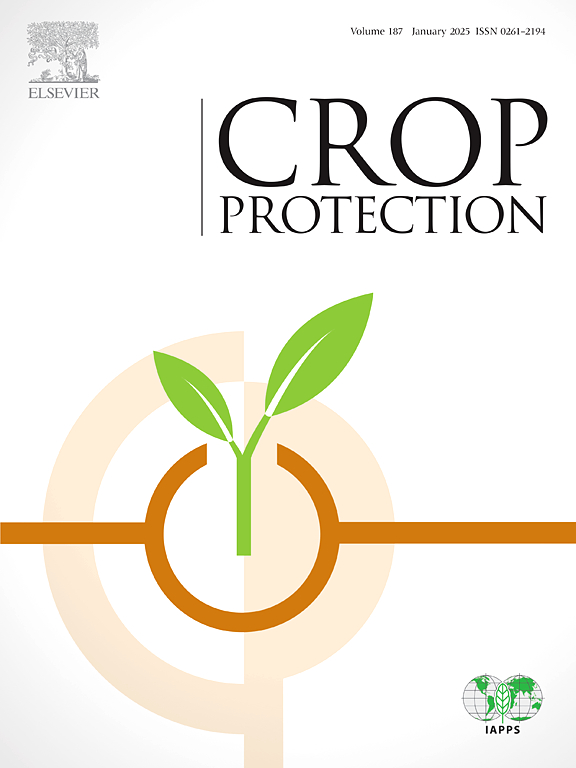First report of Penicilliopsis clavariiformis causing seed rot in Diospyros crumenata based on morphological, pathological and molecular assessment
IF 2.5
2区 农林科学
Q1 AGRONOMY
引用次数: 0
Abstract
Diospyros crumenata Thw. is an edible and economically vital critically endangered evergreen tree native to the Western Ghats of India and Sri Lanka. This study investigates the fungal pathogen Penicilliopsis clavariiformis, which has been found for the first time to cause significant seed damage in D. crumenata with a 40% seed rot disease incidence that severely impacts seed germination, characterised through molecular phylogenetic analysis of concatenated sequences of the ITS and tub2 genes, combined with cultural and morphological features. Pathogenicity tests conducted both in vivo and in vitro, together with the re-isolation and identification of the pathogen based on Koch's postulates, verified its pathogenic nature. To our knowledge, this is the first report of P. clavariiformis causing seed rot to D. crumenata both in India and globally. This discovery emphasizes the urgent need for a holistic approach for seed disease management to safeguard D. crumenata, which plays a vital role in local ecosystems due to its high timber and nutritional fruit value.

求助全文
约1分钟内获得全文
求助全文
来源期刊

Crop Protection
农林科学-农艺学
CiteScore
6.10
自引率
3.60%
发文量
200
审稿时长
29 days
期刊介绍:
The Editors of Crop Protection especially welcome papers describing an interdisciplinary approach showing how different control strategies can be integrated into practical pest management programs, covering high and low input agricultural systems worldwide. Crop Protection particularly emphasizes the practical aspects of control in the field and for protected crops, and includes work which may lead in the near future to more effective control. The journal does not duplicate the many existing excellent biological science journals, which deal mainly with the more fundamental aspects of plant pathology, applied zoology and weed science. Crop Protection covers all practical aspects of pest, disease and weed control, including the following topics:
-Abiotic damage-
Agronomic control methods-
Assessment of pest and disease damage-
Molecular methods for the detection and assessment of pests and diseases-
Biological control-
Biorational pesticides-
Control of animal pests of world crops-
Control of diseases of crop plants caused by microorganisms-
Control of weeds and integrated management-
Economic considerations-
Effects of plant growth regulators-
Environmental benefits of reduced pesticide use-
Environmental effects of pesticides-
Epidemiology of pests and diseases in relation to control-
GM Crops, and genetic engineering applications-
Importance and control of postharvest crop losses-
Integrated control-
Interrelationships and compatibility among different control strategies-
Invasive species as they relate to implications for crop protection-
Pesticide application methods-
Pest management-
Phytobiomes for pest and disease control-
Resistance management-
Sampling and monitoring schemes for diseases, nematodes, pests and weeds.
 求助内容:
求助内容: 应助结果提醒方式:
应助结果提醒方式:


